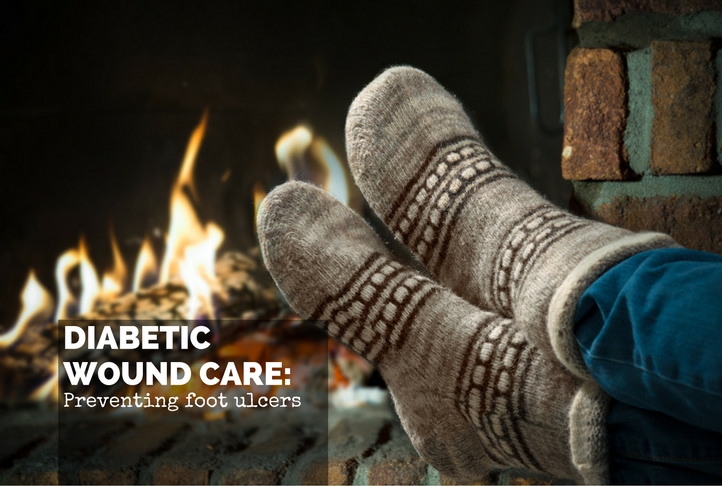Diabetes presents a host of challenges for those it affects. Between dietary restrictions, blood-sugar testing and glucose injections, it’s truly a life-altering disease.
Another unfortunate side effect of diabetes is that it can sometimes lead to complications, some of which can be quite serious. Among the more concerning complications is the development of foot ulcers.
About 15 percent of patients will develop diabetic foot ulcers, which are open sores that usually appear on the bottom of the foot, according to the American Podiatric Medical Association. About 6 percent of people who develop diabetic foot ulcers will require hospitalization.
Diabetic foot ulcers usually don’t appear out of nowhere. Poor circulation, numbness, and irritation can precede the development of a foot ulcer. Diabetics who have developed neuropathy (inability to feel pain) in their feet because of long-term, elevated glucose levels are also at higher risk. Neuropathy could make it more difficult to detect when an ulcer has formed, so people living with it must be careful to inspect their socks when they take them off to make sure there aren’t signs of blood or other drainage.
When a diabetic foot ulcer is detected, the first priority becomes to prevent the ulcer from becoming infected. Obviously, cleaning the ulcer and bandaging it daily are good ideas, and anyone with a foot ulcer should take care to avoid walking around barefoot. But closely monitoring and keeping your blood glucose levels under control is also very important.
Of course, the best way to treat a problem is to prevent it from happening, and diabetic foot ulcers are no different.
Here are some steps people living with diabetes can take to reduce the chances of developing foot ulcers:
- Improve your diet: High cholesterol and uncontrolled high blood sugar can both contribute to the development of foot ulcers;
- Cut out the bad habits: Smoking is bad for everyone, but it’s even worse for people with diabetes. Alcohol can also have adverse side effects. Cut out both.
- Wear proper shoes: Uncomfortable, ill-fitting shoes can cause plenty of complications, including diminished blood flow to the feet.
If, despite your best efforts, you develop a diabetic foot wound, watch it carefully. If regularly cleaning and bandaging the wound doesn’t seem to be helping, or if there are signs of infection, it is important to consult with a podiatrist or endocrinologist.


